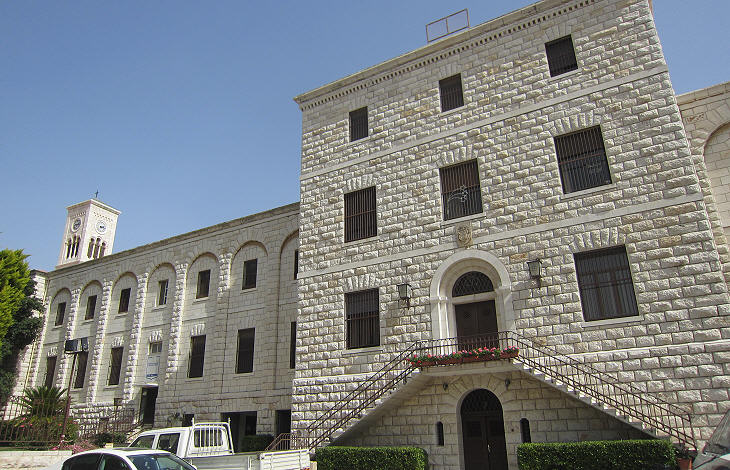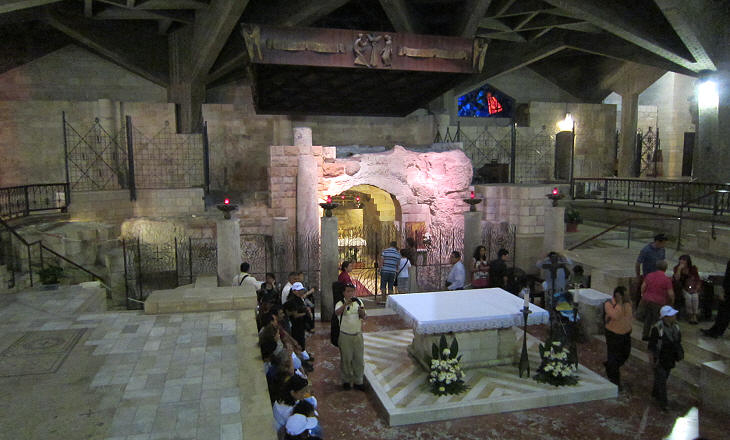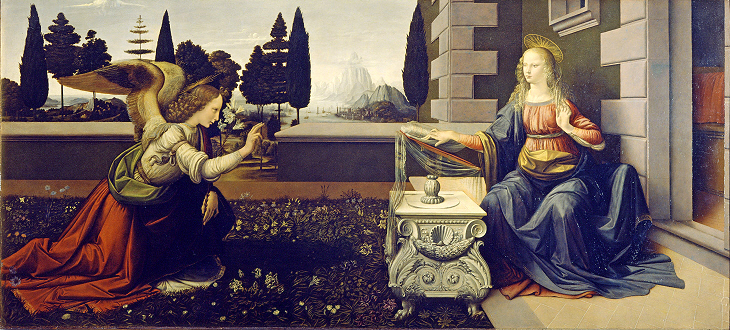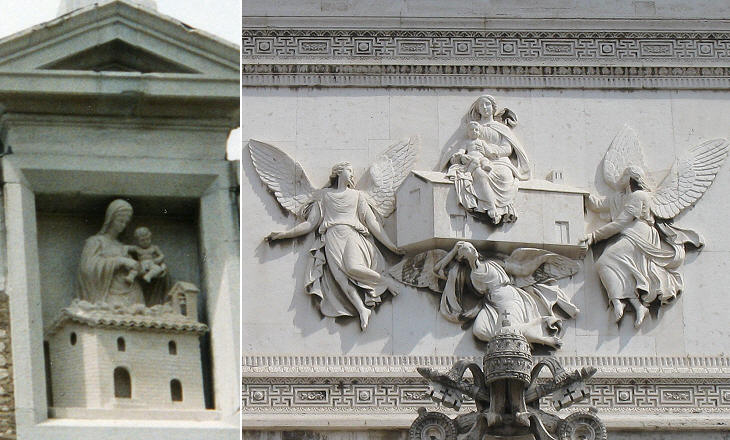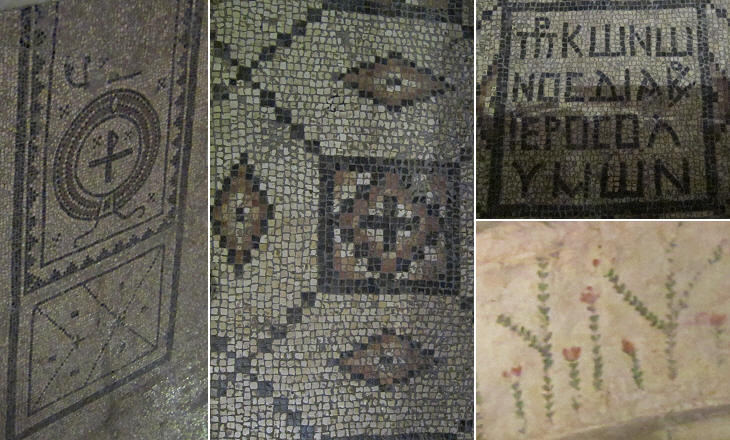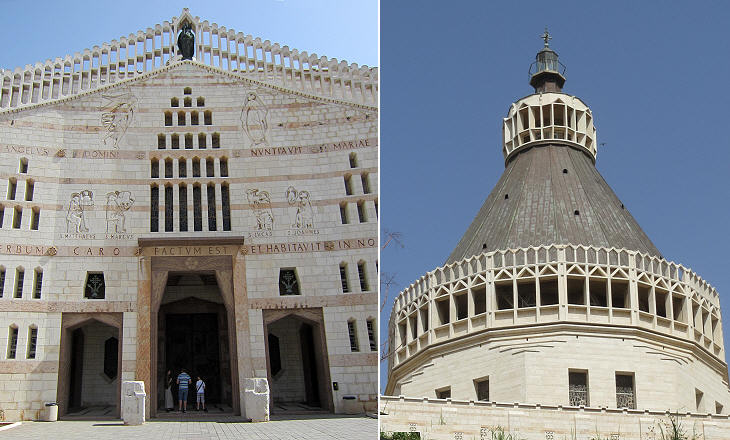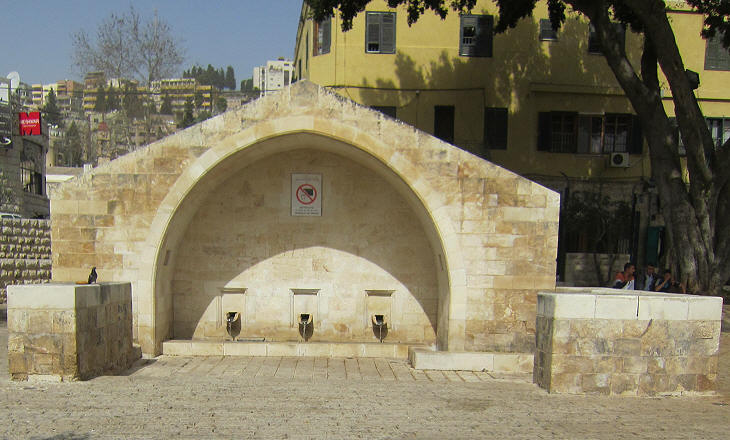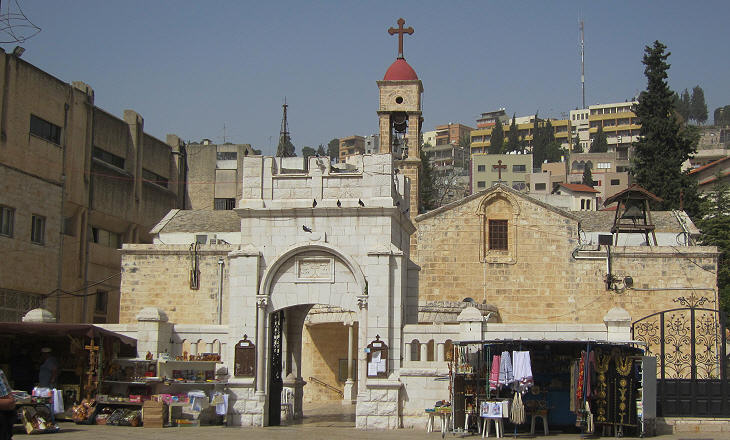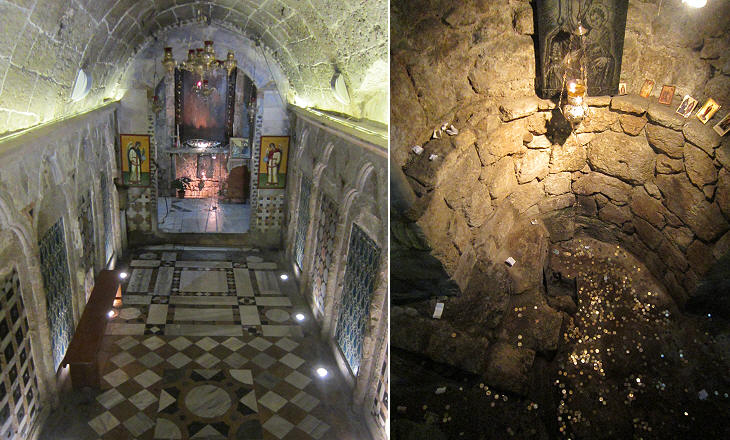  What's New! Detailed Sitemap All images © by Roberto Piperno, owner of the domain. Write to romapip@quipo.it. Text edited by Rosamie Moore. Page added in May 2013. |
 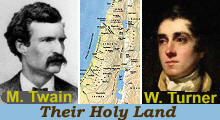 - Nazareth - Nazareth
If you came to this page directly, you might wish to read a page with an introduction to this section first. Christ did few miracles in Nazareth, and staid but a little while. The people said, "This the Son of God! Why, his father is nothing but a carpenter. We know the family. We see them every day. Are not his brothers named so and so, and his sisters so and so, and is not his mother the person they call Mary? This is absurd." He did not curse his home, but he shook its dust from his feet and went away. Mark Twain - The Pilgrims Abroad - 1869
At half past four I alighted at the Roman Catholick convent, the finest in the Holy Land. It is indeed a very handsome building and has accommodation for twenty five monks though now there are only eleven. It was built originally by Helena. I was received by the monks with the greatest hospitality and I am very comfortably lodged in the room which is occupied by the superior of Jerusalem when he visits Nazareth. William Turner - Journal of a Tour in the Levant - 1820
We entered the great Latin Convent which is built over the traditional dwelling-place of the Holy Family. We went down a flight of fifteen steps below the ground level, and stood in a small chapel tricked out with tapestry hangings, silver lamps, and oil paintings. A spot marked by a cross, in the marble floor, under the altar, was exhibited as the place made forever holy by the feet of the Virgin when she stood up to receive the message of the angel. So simple, so unpretending a locality, to be the scene of so mighty an event! M. Twain
The very scene of the Annunciation - an event which has been commemorated by splendid shrines and august temples all over the civilized world, and one which the princes of art have made it their loftiest ambition to picture worthily on their canvas; a spot whose history is familiar to the very children of every house, and city, and obscure hamlet of the furthest lands of Christendom; a spot which myriads of men would toil across the breadth of a world to see, would consider it a priceless privilege to look upon. It was easy to think these thoughts. But it was not easy to bring myself up to the magnitude of the situation. I could sit off several thousand miles and imagine the angel appearing, with shadowy wings and lustrous countenance, and note the glory that streamed downward upon the Virgin's head while the message from the Throne of God fell upon her ears - any one can do that, beyond the ocean, but few can do it here. I saw the little recess from which the angel stepped, but could not fill its void. The angels that I know are creatures of unstable fancy - they will not fit in niches of substantial stone. Imagination labors best in distant fields. I doubt if any man can stand in the Grotto of the Annunciation and people with the phantom images of his mind its too tangible walls of stone. M. Twain
Turner was only twenty-two years old when he visited Nazareth. His youth explains why, although he was a member of His Majesty's Foreign Office, he made a tactless remark: The house of our lady of Loretto is fabled to have been carried from this grotto which the Padre (Father, the prior of the monastery) assured me it exactly fitted before it was enlarged. At Nazareth it is not "politically correct" to make references to Loreto, the Italian town where, according to tradition, angels carried the house of Mary at the end of the XIIIth century. Turner was not familiar with Cervantes' Don Quixote: Sancho! Where hast thou learned that it is well done to mention the rope in the house of the man that has been hanged? (Chapter 28 - Translated by John Orms).
It is an imposture - this grotto stuff - but it is one that all men ought to thank the Catholics for. Wherever they ferret out a lost locality made holy by some Scriptural event, they straightway build a massive - almost imperishable - church there, and preserve the memory of that locality for the gratification of future generations. If it had been left to Protestants to do this most worthy work, we would not even know where Jerusalem is to-day, and the man who could go and put his finger on Nazareth would be too wise for this world. The world owes the Catholics its good will even for the happy rascality of hewing out these bogus grottoes in the rock; for it is infinitely more satisfactory to look at a grotto, where people have faithfully believed for centuries that the Virgin once lived, than to have to imagine a dwelling-place for her somewhere, any where, nowhere, loose and at large all over this town of Nazareth. M. Twain
In the 1960s Italian architect Giovanni Muzio designed a new gigantic church which replaced that built in the XVIIIth century and which was too small to accommodate the growing number of pilgrims who visited Nazareth. It is embellished with modern works of art by artists from all over the world, but their different styles convey the idea of visiting an art exhibition, rather than a shrine.
At Nazareth we camped in an olive grove near the Virgin Mary's fountain. (..) This "Fountain of the Virgin" is the one which tradition says Mary used to get water from, twenty times a day, when she was a girl, and bear it away in a jar upon her head. The water streams through faucets in the face of a wall of ancient masonry which stands removed from the houses of the village. The young girls of Nazareth still collect about it by the dozen and keep up a riotous laughter and sky-larking. The Nazarene girls are homely. Some of them have large, lustrous eyes, but none of them have pretty faces. M. Twain
I visited the fountain of the Panagia (one of the titles of Mary in Greek) in the church of the Greek convent within the village. The water from being shut up in a hot church which was very dark, is nearly tepid. Outside of the church is a fountain at which were watering not fewer than 500 camels, horses, cattle, etc. Among the village women filling their pitchers I distinguished some pretty girls. The water in Nazareth is excellent. W. Turner
According to the (apocryphal) Gospel of James the Annunciation took place at a well where Mary was filling her pitcher. Based on this tradition, a Greek Orthodox Church was built above the well (Twain did not visit it). The Arab Christian inhabitants of Nazareth keep the two accounts of the Annunciation together by saying that the Annunciation took place at the well, but Mary was so scared that she ran home where a second Annunciation occurred. The image used as background for this page shows the Annunciation by Beato Angelico at the Museum of S. Marco in Florence. Move to: Introductory Page Nimrod Castle Banias (Caesarea Philippi) Acre (Akko) Turner's excursion to Kaifah (Haifa) Tiberias Holy sites in Galilee Jerusalem Jaffa A Glimpse of Tel Aviv  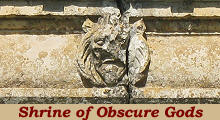 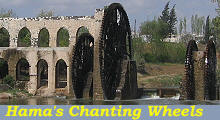 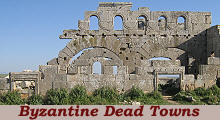 |
